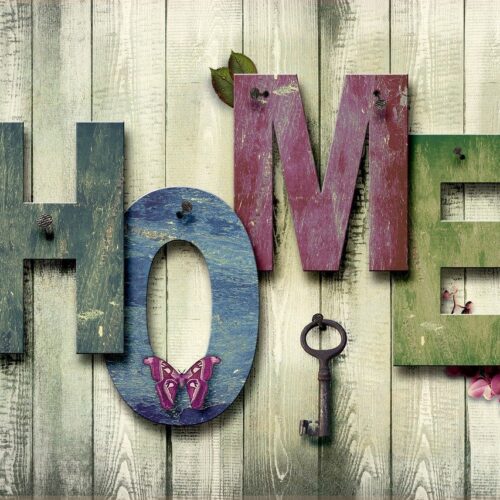Improving Outcomes for Youth Across Service Systems: A King County, Washington Initiative
 The majority of youth in the juvenile justice system have multiple needs that contribute to their likelihood of reoffending and experiencing poor outcomes through adulthood. The statistics are revealing. For example, up to 70 percent of youth in the juvenile justice system have a diagnosable mental disorder,[1] and up to 50 percent have significant substance use disorders, often co-occurring with mental health disorders.[2] Furthermore, a large percentage of youth in the juvenile justice system experience significant educational barriers,[3] as well as involvement with the child welfare system.[4]
The majority of youth in the juvenile justice system have multiple needs that contribute to their likelihood of reoffending and experiencing poor outcomes through adulthood. The statistics are revealing. For example, up to 70 percent of youth in the juvenile justice system have a diagnosable mental disorder,[1] and up to 50 percent have significant substance use disorders, often co-occurring with mental health disorders.[2] Furthermore, a large percentage of youth in the juvenile justice system experience significant educational barriers,[3] as well as involvement with the child welfare system.[4]
While many jurisdictions recognize the value of juvenile justice systems collaboration to address the comprehensive needs of youth under system supervision, in practice many locales struggle to implement a coordinated approach. Jurisdictions that seek to coordinate juvenile justice system interventions with other systems that serve youth, however, can increase the availability and access to services, ensure that high-quality services are provided, and reduce costs.[5] In Washington State, King County’s Uniting for Youth initiative has brought together youth service agencies to develop cross-systems protocols and processes, and to institutionalize ongoing cross-systems training in an effort to reduce recidivism and improve youth outcomes.
“Youth touched by the child welfare system were entering the juvenile justice system at an earlier age, were recidivating more quickly, and were penetrating the system more deeply, including incarceration in the state correctional facilities,” says Bruce Knutson, Director of King County’s Juvenile Court Services. “We were concerned that the two systems were operating in silos and working with youth and families in different ways.”
Representatives from the juvenile justice system and other service systems in King County have met monthly since launching the United for Youth initiative in 2005. The program’s executive committee comprises a cross-section of leaders from agencies and nonprofit organizations that serve youth in the county, while a Systems Integration Coordinator oversees the initiative and coordinates the ongoing work of the committee and Uniting for Youth members. Members include local and state representatives from juvenile detention and probation, court services such as public defenders and the office of the attorney general, and education leaders, as well as members from child welfare and behavioral health systems.
Uniting for Youth employs several key elements of cross-systems collaboration that research shows to be effective, including:
- Identifying shared goals and indicators of success, and developing an action plan to achieve them. The Uniting for Youth initiative has several subcommittees focused on common concerns, such as education and mental health, and each subcommittee has developed a work plan with clear action items to advance interagency improvements.
- Developing cross-systems protocols and processes. King County has established interagency protocols and designated liaisons that ensure that the juvenile justice and child welfare systems know when a youth is involved in both systems.
- Institutionalizing ongoing cross-systems training. King County has facilitated quarterly multiagency training for hundreds of staff on interagency protocols and how to access services from other systems.
- Collecting, evaluating, and sharing data across agencies, and using data to guide improvements. In order to share client information effectively across systems such as mental health, child welfare, and substance use, initiative members developed a guide on information sharing, with support from Casey Family Programs and the John D. and Catherine T. MacArthur Foundation. This guide details what client data can be shared across systems and specific guidelines for doing so. It applies to programs and staff working with youth, including juvenile probation counselors, school staff and educators, behavioral health treatment staff, and law enforcement personnel.
These strategies have significantly improved the county’s capacity to serve its youth. For example, the PathNet initiative was developed by Uniting for Youth’s education subcommittee in 2005. For youth who are not enrolled in secondary education or GED training and are involved with the juvenile justice system, PathNet works to reengage them by providing case management and connections to GED preparation resources, higher education, employment, and/or vocational training and certification. Increased state funding to support youth who have either dropped out of school or are not on track to graduate high school by age 21 has enabled PathNet to expand the number of alternative educational and employment opportunities for youth. In 2013, the Vera Institute of Justice published its evaluation of PathNet’s two-year pilot phase (June 2010–May 2012), finding that in its first year, PathNet connected 93 percent of the 127 youth enrolled in the program with a tailored education or employment plan.[6] After two years, 43 percent of youth in the program obtained a GED.[7]
In 2012, the MacArthur Foundation supported an implementation evaluation on Uniting for Youth. Several members of the initiative who were interviewed for the evaluation noted a significant change in the way individuals and systems work together. One member stated, “We realize we are all working with the same kids…We understand the concept of integrated and coordinated services, and are implementing that approach.”[8]
Another member in the initiative commented on its broader impact. “The biggest success has been the ability for people in different areas to come together who usually wouldn’t be working together. This has positively affected our youth… systems are talking to systems through the members of Uniting for Youth.”[9]
[1] Kathleen R. Skowyra and Joseph J. Cocozza, Blueprint for Change: A Comprehensive Model for the Identification and Treatment of Youth with Mental Health Needs in Contact with the Juvenile Justice System (Delmar, NY: National Center for Mental Health and Juvenile Justice, 2007), www.ncmhjj.com/wp-content/uploads/2013/12/Blueprint.pdf .
[2] Hilary Hodgdon, “Juvenile Offenders and Substance Use and Abuse,” The Future of Children 18, no. 2 (2008), futureofchildren.org/futureofchildren/publications/highlights/18_02_Highlights_05.pdf; Skowyra and Cocozza, Blueprint for Change.
[3] Peter Leone and Lois Weinberg, Addressing the Unmet Educational Needs of Children and Youth in the Juvenile Justice and Child Welfare Systems (Washington, DC: Center for Juvenile Justice Reform, 2010), http://cjjr.georgetown.edu/pdfs/ed/edpaper.pdf.
[4] Denise Herz, et al., Addressing the Needs of Multi-System Youth: Strengthening the Connection between Child Welfare and Juvenile Justice (Washington, DC: Center for Juvenile Justice Reform and Robert F. Kennedy Children’s Action Corps, 2012), cjjr.georgetown.edu/pdfs/msy/AddressingtheNeedsofMultiSystemYouth.pdf; Denise Herz, Miriam Krinsky, and Joseph P. Ryan, “Improving System Responses to Crossover Youth: The Role of Research and Practice Partnership,” The Link: Connecting Juvenile Justice and Child Welfare 5, no. 1 (2006),
http://66.227.70.18/programs/juvenilejustice/thelink2006summer.pdf.
[5] Eric Bruns, “The Evidence Base and Wraparound,” in The Resource Guide to Wraparound, eds. Eric Bruns and Janet Walker (Portland, OR: National Wraparound Initiative, Research and Training Center for Family Support and Children’s Mental Health, 2008); Beth A. Stroul and Robert M. Friedman, A System of Care for Children and Youth with Severe Emotional Disturbances (Washington, DC: Georgetown University, Child and Adolescent Service System Program Technical Assistance Center, 1994).
[6] Models for Change, “Dropout Re-engagement Legislation Supports Statewide Replication of Washington Models for Change Project,” news release, http://www.modelsforchange.net/newsroom/399.
[7] Vera Institute of Justice, A Pilot Phase Analysis of King County, Washington’s PathNet Program, Years 1 and 2 combined (New York: Vera Institute of Justice, 2013), www.modelsforchange.net/publications/465.
[8] Linda Rinaldi and Nancy Ashley, King County Uniting for Youth Implementation Evaluation (Seattle: Washington Models for Change, 2012), http://www.modelsforchange.net/publications/468.
[9] Linda Rinaldi and Nancy Ashley, King County Uniting for Youth Implementation Evaluation.
A positive school experience, where a child feels secure, is essential for their well-being. However, for many children…
Read MoreWhen returning to their communities from criminal justice settings, people with behavioral health needs face barriers in accessing…
Read More Supporting Children of Incarcerated Parents: Reimagining School and Community Collaboration
Supporting Children of Incarcerated Parents: Reimagining School and Community Collaboration
A positive school experience, where a child feels secure, is essential for…
Read More Bridging Communities and Correctional Systems: Q&A with CSG Justice Center Advisory Board Member Commissioner Nicholas Deml
Read More
Bridging Communities and Correctional Systems: Q&A with CSG Justice Center Advisory Board Member Commissioner Nicholas Deml
Read More
 Assigned to the Cloud Crew: The National Incarceration Association’s Hybrid Case Management for People with Behavioral Health Needs
Assigned to the Cloud Crew: The National Incarceration Association’s Hybrid Case Management for People with Behavioral Health Needs
When returning to their communities from criminal justice settings, people with behavioral…
Read More Meet the Medicaid and Corrections Policy Academy Mentor States
Meet the Medicaid and Corrections Policy Academy Mentor States
New Hampshire Department of Corrections Commissioner Helen Hanks presents at the Medicaid…
Read More Taking the HEAT Out of Campus Crises: A Proactive Approach to College Safety
Taking the HEAT Out of Campus Crises: A Proactive Approach to College Safety
The sharp rise in school shootings over the past 25 years has…
Read More










